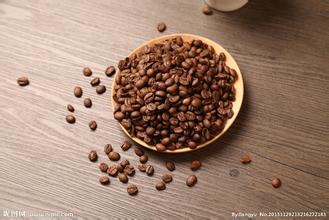Introduction to different varieties and producing areas of coffee beans with different tastes
Introduction to different varieties and producing areas of coffee beans with different tastes
French filter press, plug air, drip filter or mocha pot do not require high fineness of coffee powder. Knife milk grinder (commonly known as bean chopper or propeller grinder) can not adjust the scale, but to adjust the size of coffee powder according to the length of time, the size of coffee powder is uneven, so it is not suitable for making espresso. It is generally believed that as long as you have an espresso machine, you can make delicious Italian coffee, which is only half right, and the other half depends on a more sophisticated double-gear bean grinder. The lower gear of this bean grinder is connected to a powerful motor, providing a force for high-speed rotation, while the upper gear is connected to the scale and twisted in the reverse clockwise direction, the reading of the scale is getting smaller and smaller, and the upper gear is falling, narrowing the distance between the upper gear and the lower gear. This means that the finer the coffee powder is ground. If the upper gear is twisted in the clockwise direction, the larger the scale value is, the higher the upper gear is and the larger the distance between the upper gear and the lower gear is, so the coffee powder is thicker.
The double-gear bean grinder sets the size of the coffee powder by adjusting each other's height, but don't underestimate this kind of bean grinder. Its structure is extremely precise. Without the double-gear bean grinder, it is impossible to make thick, authentic espresso.
Visual observation of the quality of espresso
Whether espresso is successful or not can only reach 51% accuracy by looking at the flow rate, color or the number of seconds of reading, and it must be tested in person before it is safe. Although the visual method is not very accurate, there is a visual table for reference:
The grinding thickness of coffee beans will also affect the taste. Under the premise of consistent objective conditions, generally speaking, the more fine the grinding is, the more bitter the coffee will be, and relatively, it will cover up other rich flavors of coffee. The thicker the grinding, the more sour it will be. Too sour will make coffee difficult to taste, so when you want to show a unique flavor of coffee, you can also use micro-survey grinding to achieve the effect. However, this adjustment should be based on the corresponding grinding degree of the instrument to make appropriate fine-tuning of different utensils, and even different coffee beans in the same vessel need to be ground to a specific thickness. For all kinds of coffee extraction methods, whether the grinding degree is appropriate or not can directly determine its success or failure. The grinding of coffee beans seems complicated, but in fact there are rules to follow.
No matter what kind of utensils are used to extract coffee, generally speaking, the shorter the extraction time is, the finer the powder needs to be ground, and the longer the extraction time is, the thicker the powder is. There are also special cases, such as Turkish coffee is ground very fine, but the extraction time is also very long. But except for those special instruments, other instruments generally follow this law.

Important Notice :
前街咖啡 FrontStreet Coffee has moved to new addredd:
FrontStreet Coffee Address: 315,Donghua East Road,GuangZhou
Tel:020 38364473
- Prev

How do coffee beans grow-- how many years does it take for coffee trees to bear fruit?
How do coffee beans grow-how many years does it take for coffee trees to bear fruit? the preservation environment has a great impact on raw coffee beans. The rate of change of ingredients in raw coffee beans will be affected by the environment, and the most affected by temperature and humidity. An increase in temperature will promote the change, while a decrease in temperature will inhibit the change. If you keep it in a place with high temperature and humidity for a long time, such as collection box (no
- Next

What kind of coffee beans are just planted? What is the extract?
What kind of coffee beans are just planted? What is the extract? coffee beans are basically two growing opposite each other. So one side of the coffee bean will be flat. This kind of coffee bean with one side is called flat bean. Some coffee fruits contain only one seed (5% to 20% of the total), which is due to fertilization or environmental factors, resulting in strict seed growth on one side.
Related
- Guji coffee producing area of Guji, Ethiopia: Humbela, Shakiso, Wulaga
- What is the most expensive variety of Qiloso in BOP multi-variety group?
- How to store the coffee beans bought home?
- Why are Yemeni coffee beans so rare now?
- Ethiopian Sidamo all Red Fruit Sun Sun Santa Vini Coffee beans
- SOE is mostly sour? What does it mean? Is it a single bean? what's the difference between it and Italian blending?
- Is Italian coffee beans suitable for making hand-brewed coffee?
- How to choose coffee beans when making cold coffee? What kind of coffee beans are suitable for making cold coffee?
- Just entered the pit to make coffee, what kind of coffee beans should be chosen?
- Can only Japan buy real Blue Mountain Coffee? What are authentic Jamaican Blue Mountain coffee beans?

